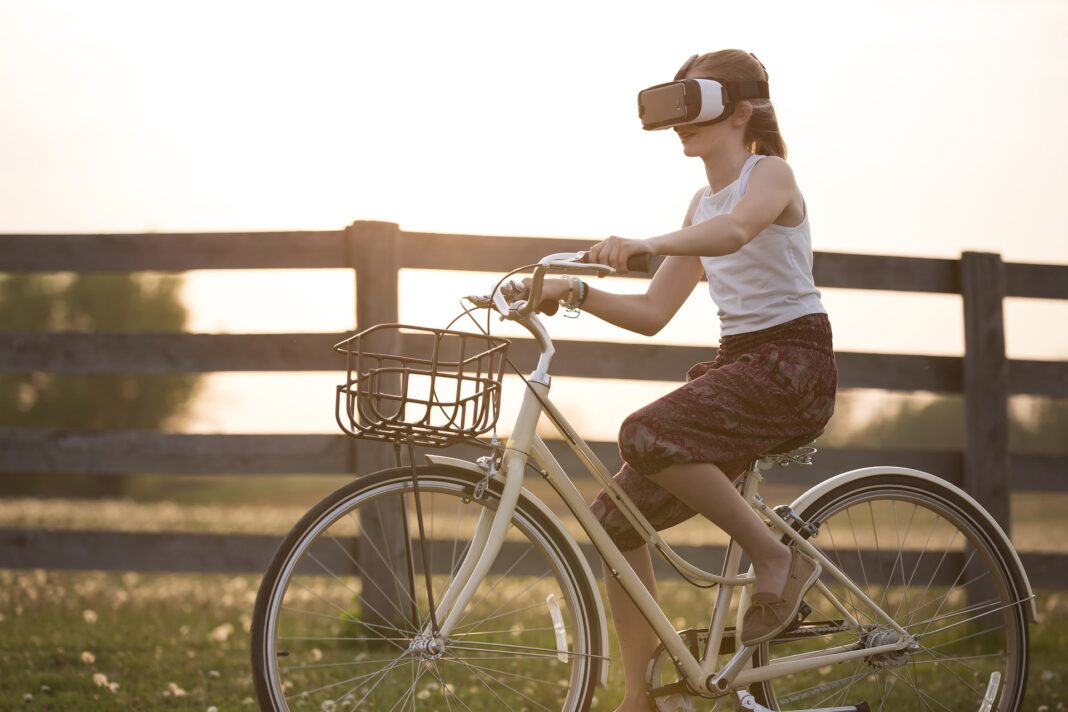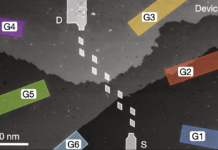Image Credit: Ricarda Mölck from Pixabay
References:
K. Proniewska, D. Dołęga-Dołęgowski, D. Dudek, “A holographic doctors’ assistant on the example of a wireless heart rate monitor”, Bio-Algorithms and Med-Systems, vol. 14, no. 2, pp. UNSP 20180007, 2018.
[su_expand more_text=”Full references list” link_style=”dotted” more_icon=”icon: plus-circle”]A. Suh and J. Prophet, “The state of immersive technology research: A literature analysis”, Computers in Human Behavior, vol. 86, pp. 77e90, 2019. R. T. Azuma, “A survey of augmented reality”, Presence: Teleoperators and Virtual Environments, vol. 6, no.4, pp. 355–385, 1997. R. T. Azuma RT, Y. Baillot, R. Behringer, S. Feiner, S. Julier and B. MacIntyre, “Recent advances in augmented reality”, IEEE Computer Graphics and Applications, vol. 21, no. 6, pp. 34–47, 2001. S. C. Ozbek, B. Giesler, and R. Dillmann R, “Jedi training: playful evaluation of head-mounted augmented reality display systems”, The Conference Medical Imaging, Proceedings of SPIE, San Diego, California, USA, 2004. J. Lee, Y. Kim, M. H. Heo, D. Kim, and B. S. Shin BS, “Real-Time Projection-Based Augmented Reality System for Dynamic Objects in the Performing Arts”, Symmetry, vol. 7, pp. 182–192, 2015. B. Schwald and B. Laval, “Anaugmentedrealitysystemfortrain-ing and assistance to maintenance in the industrial context”, Proceedings of the International Conference in Central Europe on Computer Graphics, Visualization and Computer Vision, 425–432, University of West Bohemia, Plzen, Czech Republic; 2003. F. Ferragutia, F. Pini, T. Galec, F. Messmer, C. Storchi C, F. Leali F, et al., “Augmented reality based approach for on-line quality assessment of polished surfaces”, Robotics and Computer-Integrated Manufacturing, vol. 59, pp. 158–167, 2019. R. Grasset, X. D and J. D. Gascuel, “Augmented reality collaborative environment: calibration and interactive science editing”, Proceedings of the Virtual Reality International Conference (VRIC ’01), Laval Virtual; 2001. G. A. Kumar, A. Kumar Patil, T. W. Kang, and Y. H. Chai, “Sensor Fusion Based Pipeline Inspection for the Augmented Reality System”, Symmetry, vol. 11, pp. 1325, 2019. M. Eckert, J. S. Volmerg and C. M. Friedrich, “Augmented Reality in Medicine: Systematic and Bibliographic Review”, JMIR Mhealth Uhealth vol. 7, no. 4, pp. e10967, 2019. D. Birchfield, H. Thornburg, C. Megowan-Romanowicz, S. Hatton, B. Mechtley, I. Dolgov et al., “Embodiment, Multimodality, and Composition: Convergent Themes across HCI and Education for Mixed-Reality Learning Environments”, Advances in Human-Computer Interaction, pp. 874563, 2008. U. Lucke and R. Zende, “3D Interactions between Virtual Worlds and Real Life in an E-Learning Community”, Advances in Human-Computer Interaction, pp. 684202, 2011. O. M. Tepper, H. L. Rudy, A. Lefkowitz, K. A. Weimer, S. M. Marks, C. S. Stern et al., „Mixed Reality with HoloLens: Where Virtual Reality Meets Augmented Reality in the Operating Room”, Plastic and Reconstructive Surgery, vol. 140, no. 5, pp. 1066–1070, 2018. I. D. Keenan and A. Ben Awadh, “Integrating 3D Visualisation Technologies in Undergraduate Anatomy Education”, Advances in Experimental Medicine and Biology, vol. 1120, pp. 39–53, 2019. C. I. Foronda, C. M. Alfes, P. Dev, A. Kleinheksel, D. A. Jr. Nelson, J. M. O’Donnell JM, et al., “Virtually Nursing: Emerging Technologies in Nursing Education”, Nurse Education, vol. 42, pp. 14–17, 2017. S. W. Hauze, H. H. Hoyt, J. P. Frazee, P. A. Greiner, and J. M. Marshall, “Enhancing Nursing Education Through Affordable and Realistic Holographic Mixed Reality: The Virtual Standardized Patient for Clinical Simulation”, Advances in Experimental Medicine and Biology, vol. 1120, pp. 1–13, 2019. A. Prochazka, O. Vysata, H. Charvatova, and M. Valis, “Motion Symmetry Evaluation Using Accelerometers and Energy Distribution”, Symmetry, vol. 11, pp. 871, 2019. L. Evans, M. Taubert, “State of the science: the doll is dead: simulation in palliative care education”, BMJ Supportive & Palliative Care, vol. 9, no. 2, pp. 117–119, 2019. S. Wang, M. Parsons, J. Stone-McLean, P. Rogers, S. Boyd, and K. Hoover et al.,“Augmented reality as a telemedicine platform for remote procedural training”, Sensors, vol. 77, no. 10, pp. 2294, 2017. Microsoft HoloLens. Available online: https://www.microsoft.com/en-us/hololens (accessed on 22 May 2020). HTC VIVE Pro. Available online: https://www.vive.com/us/product/vive-virtual-reality-system/ (accessed on 22 May 2020). O. Marquet, C. Alberico C, and A. J. Hipp, “Pokemon GO and physical activity among college students. A study using Ecological Momentary Assessment”, Computers in Human Behavior, vol. 81, pp. 215e222, 2018. D. Orgon, “HoloLens And Vive Pro: Virtual Reality Headsets”, Journal of the Medical Library Association, vol. 107, no. 1, pp. 118–121, 2019. R. Corda, D. Giusto, A. Liotta, W. Song, and C. Peraa, “Recent Advances in the Processing and Rendering Algorithms for Computer-Generated Holography”, Electronics, vol 8., pp. 556, 2019. Z. El-Schich, A. Leida Mölder, and A. Gjörloff Wingren, “Quantitative Phase Imaging for Label-Free Analysis of Cancer Cells—Focus on Digital Holographic Microscopy”, Applied Sciences, vol. 8, no, 7, pp. 1027, 2018. H. Wang, Z. Dong, F. Fan, Y. Lou and X. Jiang, “Characterization of Spatial Light Modulator Based on the Phase in Fourier Domain of the Hologram and Its Applications in Coherent Imaging”, Applied Sciences, vol. 8, no. 7, pp. 1146, 2018. D. Claus, J. Hennenlotter, Q. Liting, G. Pedrini, A. Stenzl, and W Osten, “Variable Wavefront Curvature Phase Retrieval Compared to Off-Axis Holography and Its Useful Application to Support Intraoperative Tissue Discrimination”, Applied Sciences, vol. 8, no 11, pp. 2147, 2018. B. Aruannoand F. Garzotto, “MemHolo: mixed reality experiences for subjects with Alzheimer’s disease”, Multimedia Tools and Applications, vol. 78, pp. 13517–13537, 2019. D. Mcduff, C. Hurter, and M. Gonzalez-Franc, “Pulse and vital sign measurement in mixed reality using a HoloLens”, 23rd ACM Symposium on Virtual Reality Software and Technology (VRST ’17) 2017, Göteborg, Sweden, 34, 10.1145/3139131.3139134. R. Ferrero, “Personal Assistance and Monitoring Devices Applications”, Advances in Human-Computer Interaction, pp. 8916796, 2019. K. Tcha-Tokey, O. Christmann, E. Loup-Escande, G. Loup, and S. Richir, “Towards a Model of User Experience in Immersive Virtual Environments”, Advances in Human-Computer Interaction, pp. 827286, 2018. Microsoft MRTK. Available online: https://microsoft.github.io/MixedRealityToolkit- Unity/Documentation/GettingStartedWithTheMRTK.html (accessed on 22 May 2019).[/su_expand]



